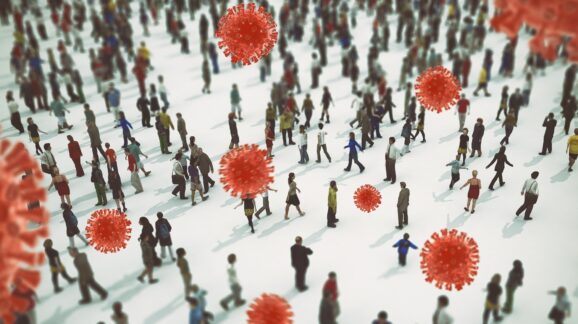Don’t believe doomsayers — new COVID outbreak is mild, and masks don’t help
COVID-19 cases are expected to rise this fall as new variants become more prevalent. And, as unfortunately expected, it’s already triggered demands by some of our more zealous public health enforcers, not to mention some teachers’ unions, to reinstate mitigation measures including mandatory masking.
Some researchers are already recommending that when cases go up, people will need to wear masks indoors again.
Epidemiologist Katelyn Jetelina, author of the widely read newsletter “Your Local Epidemiologist,” predicts COVID-19 “is going to be disruptive this winter, and it will cause a number of people to die,” and added, “That’s just not acceptable to the public health world, especially since it’s preventable.” In a recent “PBS Newshour” interview, she suggested “wearing masks in crowded areas, especially during a surge” and “certainly at home, it works, if you want to reduce household transmission.”
About 100 colleges and universities still require students to be vaccinated. A smaller number of schools including Rutgers, Georgetown, and Morris Brown College in Atlanta have reinstated mask mandates on campus.
Grade schools may be next. The Biden administration recently appointed teachers’ union boss and long-time school closure advocate Randi Weingarten to a new Department of Homeland Security school safety advisory council tasked with recommending “preparedness measures” and “safety and security” in schools.
None of this incipient hysteria is warranted.
The SARS-CoV-2 virus that causes COVID-19 is, as expected, continuing to mutate. The EG.5 variant is the most common US strain now, making up an estimated 21% of new infections in the two-week period ending August 19. The next-most common, at 13%, is the FL.1.5.1 variant.
EG.5 and FL.1.5.1 share a common spike protein mutation — F456L — which appears to help them spread more easily than earlier variants, possibly because the mutation decreases susceptibility to antibodies in previously vaccinated and/or infected people
But neither variant seems to cause more severe disease than earlier Omicron strains which were themselves less virulent than the pre-Omicron variants.
Read the full article on the New York Post.
